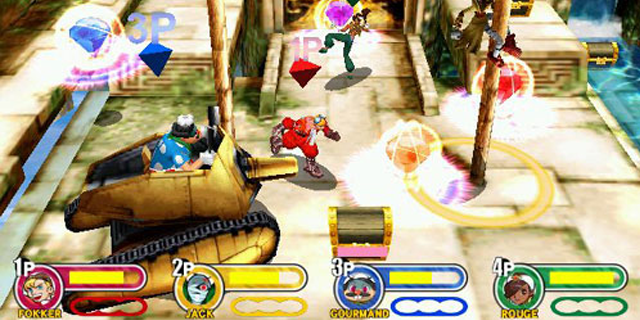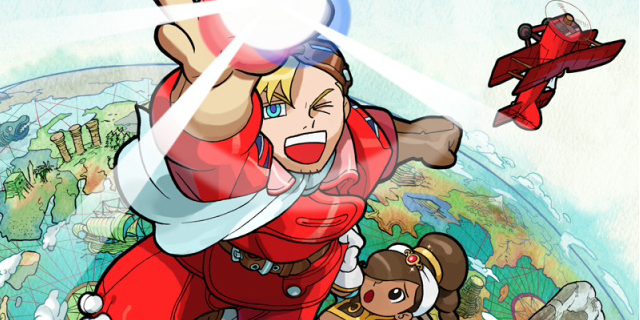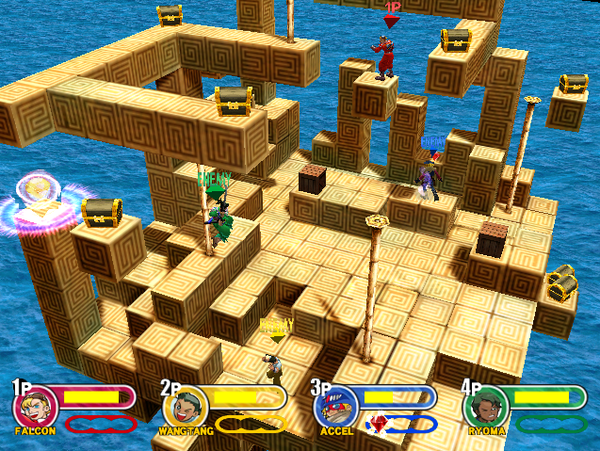Stop me if you’ve heard this one. A bunch of racial stereotypes fight in a world tournament for ultimate power. Wait, is that every fighting game? Well, some games do it better than others, and Power Stone is at the top of the list. In a time where we were hit with a glut of fighters based on basically the same play mechanics, Power Stone was able to shake things up and stand out. Read on to find out what set Power Stone apart from other fighters, and why we desperately need something like it today.
“But Matt,” you say, “a few weeks ago, you couldn’t shut up about why we should all hate Capcom. This is the second Capcom game you’ve written about in a row!” That’s a very good point, voice in my head. But it’s my column, so sit down and shut up. Last week just happened to be a game I was playing about which I wanted to share my feelings. This week’s title was picked specifically because of Capcom’s recent shenanigans. Aside from blaming the cancellation of Mega Man Legends 3 on their fans and the laundry list of other insane crap they’ve pulled in the last year or so, Capcom announced Ultimate Marvel vs. Capcom 3.
UMVC3 is an updated version of Marvel vs. Capcom 3, adding new characters, stages and a spectator mode. Releasing a full retail game like this less than a year after its predecessor not only devalues the previous game to a beta, but angered many fans who paid $60 for the last one. Now they get to pay $40 more for much of the same content they already own. There are many other ethical reasons for why this is absurd (like Capcom blaming pushing UMVC3 to retail on the Japanese earthquake), but one really sticks in my craw: there are enough freakin’ fighting games!

It seems like every month there are one to three new fighters on the shelves at Gamestop, many of them by Capcom. We’re on our third Street Fighter IV, second Marvel vs. Capcom 3, ninth Mortal Kombat and can expect two different versions of Tekken X Street Fighter to be released at the same time. Forgive me, fighting game fans, for what I’m about to say, but they also more or less play pretty much the same. Yes, each series has its quirks and differences, but 2D fighters are a genre that’s getting spread too thin. This is not a new problem. Check out the library of the Sega Dreamcast. Capcom also released plenty of fighters for the console, like two versions of Street Fighter 3, Street Fighter Alpha 3, Jojo’s Bizarre Adventure and Marvel vs. Capcom 2. 2D fighters as far as the eye can see.
But another title swaggered into the library and shook things up. Unfortunately, even though the series had two entries and is widely remembered as one of the best games on the Dreamcast, Capcom has largely forgotten this series as a whole. A company bent on rer-eleasing the same content over and over with minor tweaks and jamming their titles full of references to squeeze every last drop of juice from our nostalgia glands, Capcom hasn’t done a thing with Power Stone besides porting the originals to PSP. Unlike the glut of 2D fighters, Power Stone utilizes a 3D environment in which to fight. Each stage is littered with objects and weapons to toss at your opponent until the titular power stones appear. When you’ve gathered three stones, your character will undergo a transformation in a very Dragon Ball fashion. Each upgrade lasts about 30 seconds, or until you use up your power meter. The new forms reflect an enhanced version of your chosen character. For instance, Gunrock, a large burly fellow, transforms into a man made of rock much like Marvel’s Thing. The problem with this is much like Super Smash Bros. Brawl‘s Smash Ball: this basically makes every match in Power Stone into a mad dash for the stones. The only thing you can do when your opponent transforms is get out of there. This makes one-player Power Stone not very fun. This series is built to be a party game. The second game adds larger stages and supports up to 4 players, making the game even more fun.
I still like to play the one-player mode because of the endings. Power Stone sticks out from many fighters that tend to take themselves too seriously or see themselves as the “older brother” titles. Whereas most fighting game characters strive for immortality or world domination, the characters in Power Stone have much sillier goals. When Rouge wins the tournament, she wishes for the power to make anyone happy. This just results in letting a lot of people envision her naked, not much of a monkey’s paw twist. Gunrock is granted super strength which he uses to win free beer for the rest of his life. That kind of lighthearted fun permeates the Power Stone series through its goofy, colorful character design and easy pick-up-and-play control. It even got an anime aimed at younger audiences.
What we need from Capcom today is something like Power Stone again. Or heck, just give us Power Stone 3. Make something that isn’t just block-block-block-super attack-block-block. Even just giving Power Stone 2 a PSN/XBLA release with online support would be a start to absolving their sins. Power Stone is fairly easy to find on the Dreamcast for cheap, but Power Stone 2 can be pretty pricey. It came out late in the Dreamcast’s lifespan and was missed by most. Luckily we have the PSP collection, but nothing can compare to gathering around the ol’ Dreamcast for some four-player fun. Maybe if we make enough of a stink we can at least see Falcon in Ultimate Arcade Edition Marvel vs. Capcom Turbo Solar Plexus Kick Fight 3.
Matthew Jay’s collection is always building, and he’s always up for suggestions. Shoot him an email if you have an idea for something obscure you’d like him to cover.





















